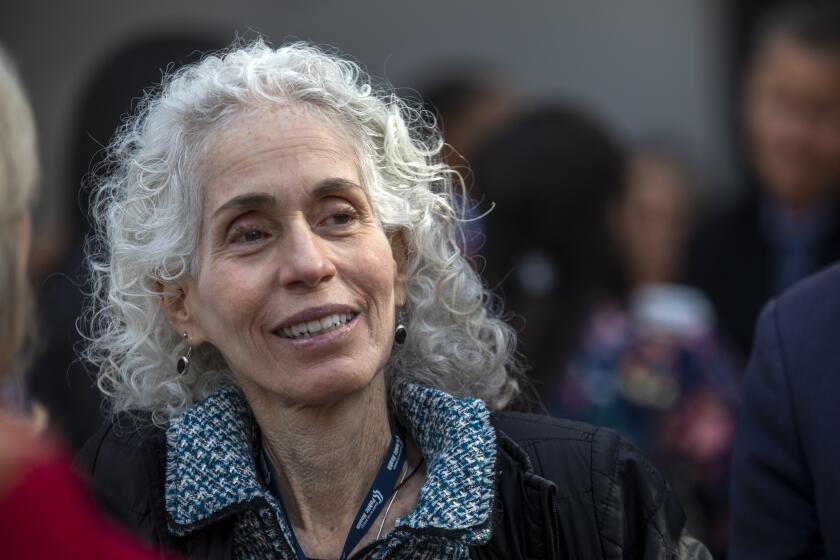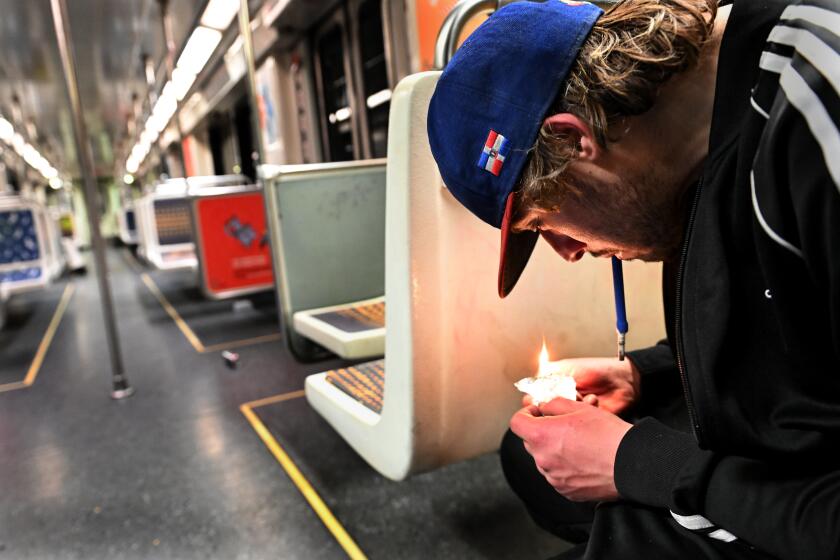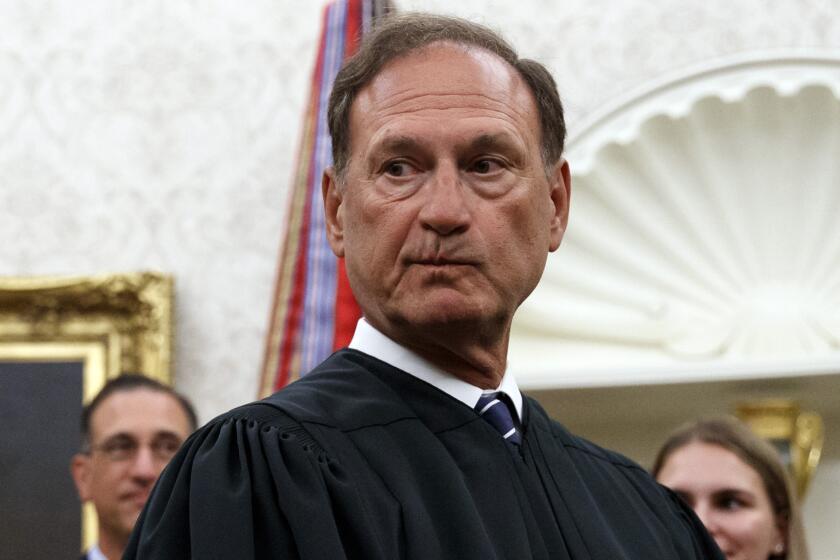As thousands marched, here’s how the LAPD handled May Day
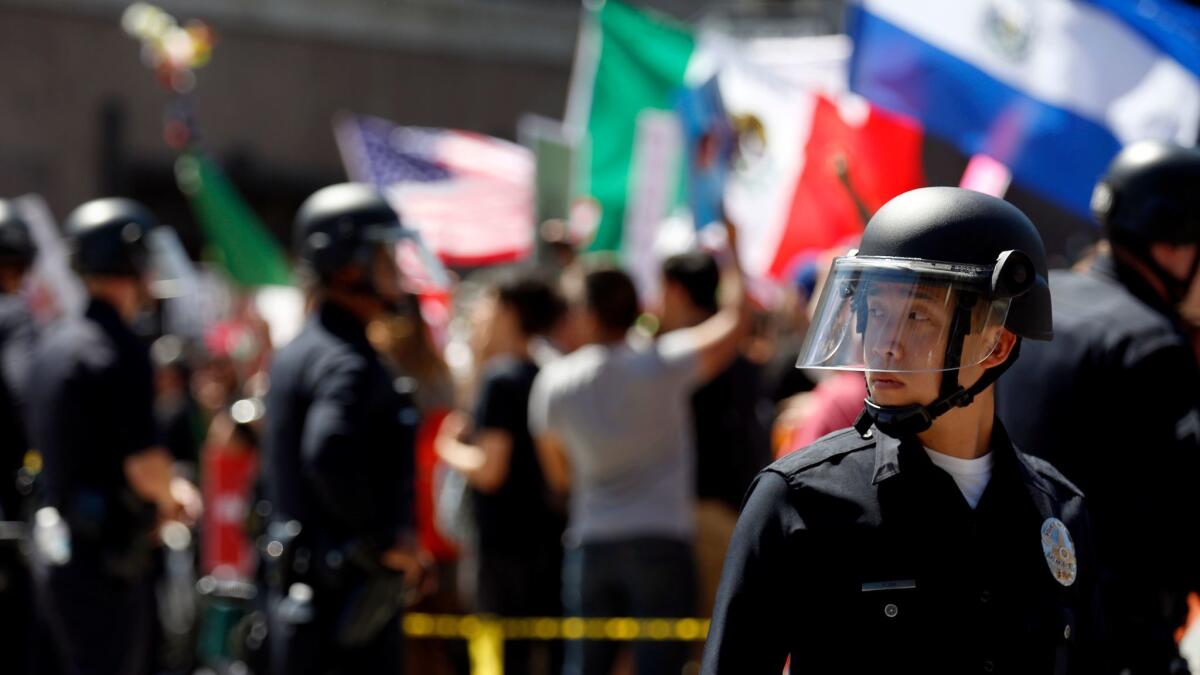
- Share via
Thousands of people marched through Los Angeles on Monday, an annual
Organizers had planned several marches that would start separately but all converge downtown near City Hall, and the LAPD was expecting a massive turnout.
The preparations for May Day are particularly important in the city given the memory of ugly clashes between LAPD officers and others at MacArthur Park a decade ago. This year, officials were especially concerned given the rise in activism after the presidential election, which helped spark violence in Berkeley, Huntington Beach and elsewhere.
Here’s how the day in Los Angeles unfolded behind police lines.
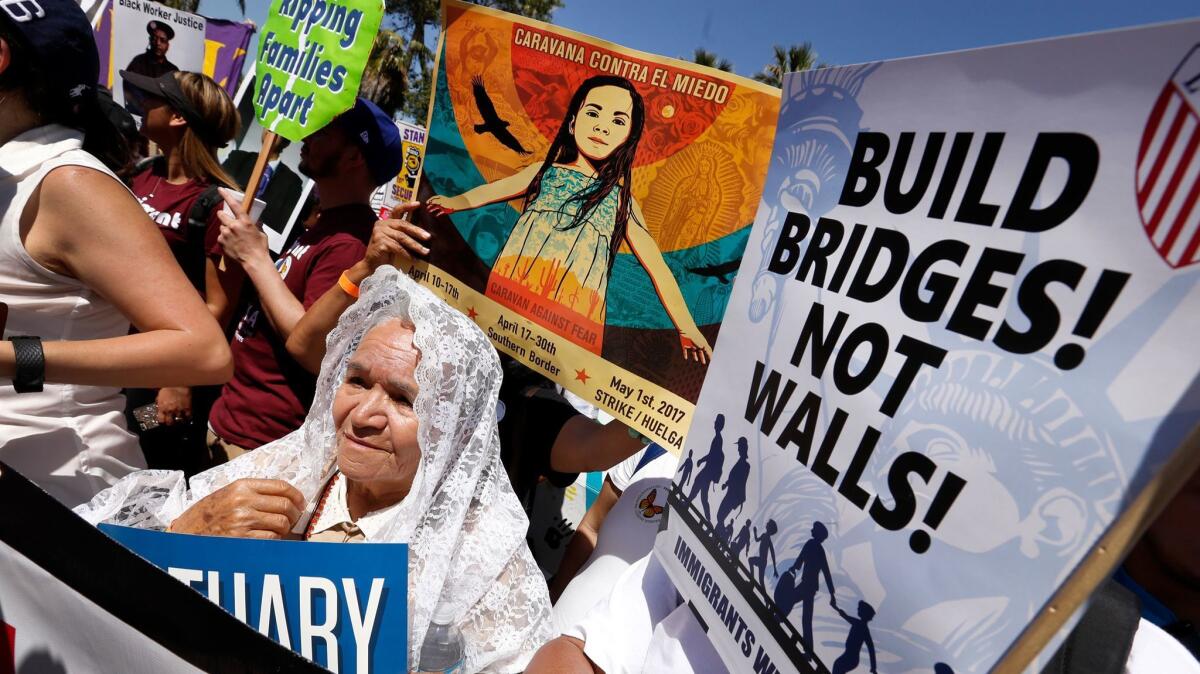
10 a.m.
MacArthur Park
As a crowd swelled near Alvarado Street and Wilshire Boulevard, Capt. Al Labrada met with organizers of one planned march with whom he had been working for months, making sure there were no last-minute changes in plans. He shook one man’s hand.
“Let me know if you need anything,” the captain told him.
Labrada, who typically works in the department’s Hollenbeck division, has spent several years as a liaison working with community groups to plan for May Day demonstrations. This year, they began talking in January.
Experience has taught Labrada the importance of meeting with the organizers. That way, he said, if they run into any issues throughout the day, they can turn to a familiar face in the LAPD for answers.
“I’d rather them come to me than figure out who to call,” he said.
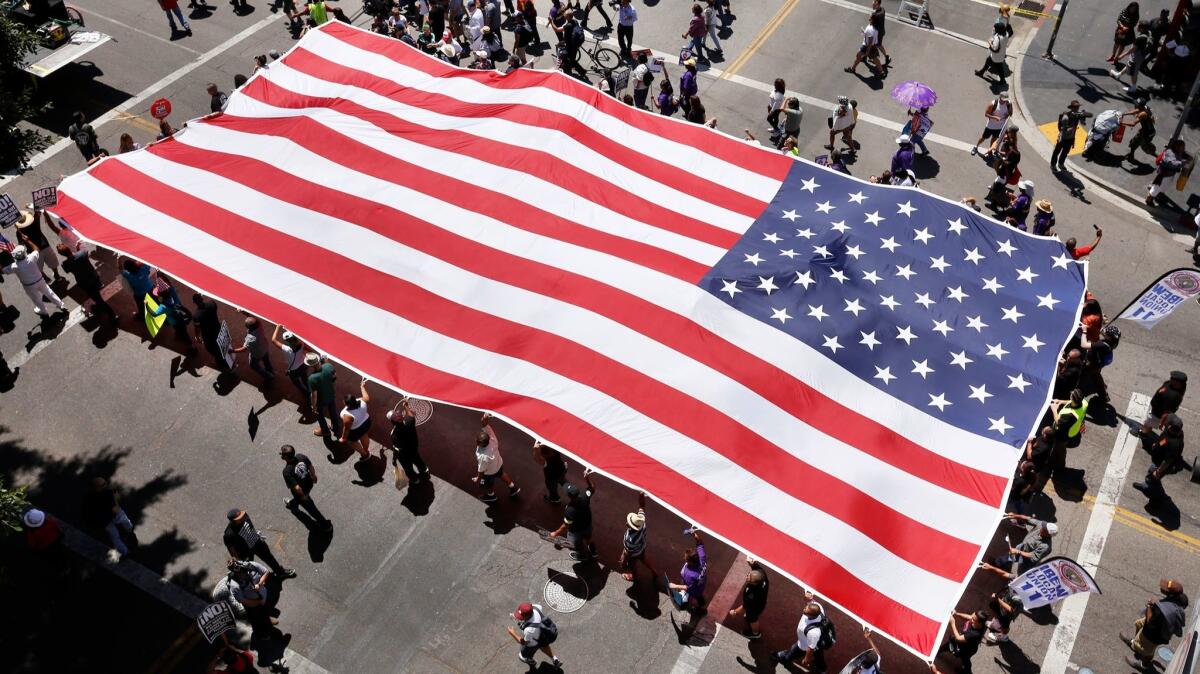
10:46 a.m.
LAPD command center
The department’s command center was set up inside a building in the downtown civic area. So far, everything was quiet.
Dozens of people from multiple agencies — the Police Department, Fire Department and California Highway Patrol — filled the command center. Maps of the different demonstration routes were taped to whiteboards. Aerial footage of the growing crowds streamed on large television screens mounted to the wall.
It is here where high-ranking LAPD officials were planning to monitor the day’s activity, get regular updates and decide how to respond to any trouble should it arise.
Deputy Chief Robert Arcos, who coordinated the LAPD’s approach to the demonstrations, said the day was running smoothly. As the crowds continued to rally, he said, he was concerned the heat could take a toll on both activists and officers. Once the marches started, his attention would shift to “how everyone is getting along.”
Arcos said the LAPD started preparing for this day in January, meeting with organizers and trying to determine the right balance of officers to deploy along the routes. The department was braced for larger-than-normal crowds, anticipating that more than 100,000 people could attend, which would make it the largest May Day demonstration the city had seen in about a decade.
When asked whether there was a point in the day where it might be deemed a success, Arcos smiled.
“Not until I’m home in bed,” he said.
11:28 a.m.
Olympic Boulevard and Broadway
Two separate groups — each totaling a few hundred people — began to march down Broadway, their chants amplified by bullhorns. Capt. Phil Smith and Lt. German Hurtado trailed behind the last group in a police SUV. Ahead of them, two officers on motorcycles crept along.
The crowds were a little smaller than anticipated, Hurtado said, but he felt the energy when he introduced himself to the groups that morning.
Broadway was closed so marchers could reach their destination between Grand Park and City Hall. Officers on motorcycles blocked traffic. Hurtado kept an eye out for cars leaving parking garages, directing one woman away from the crowd.
The primary goal, they said, was to help the demonstrators arrive safely.
“A win for them is a win for us,” Smith said.
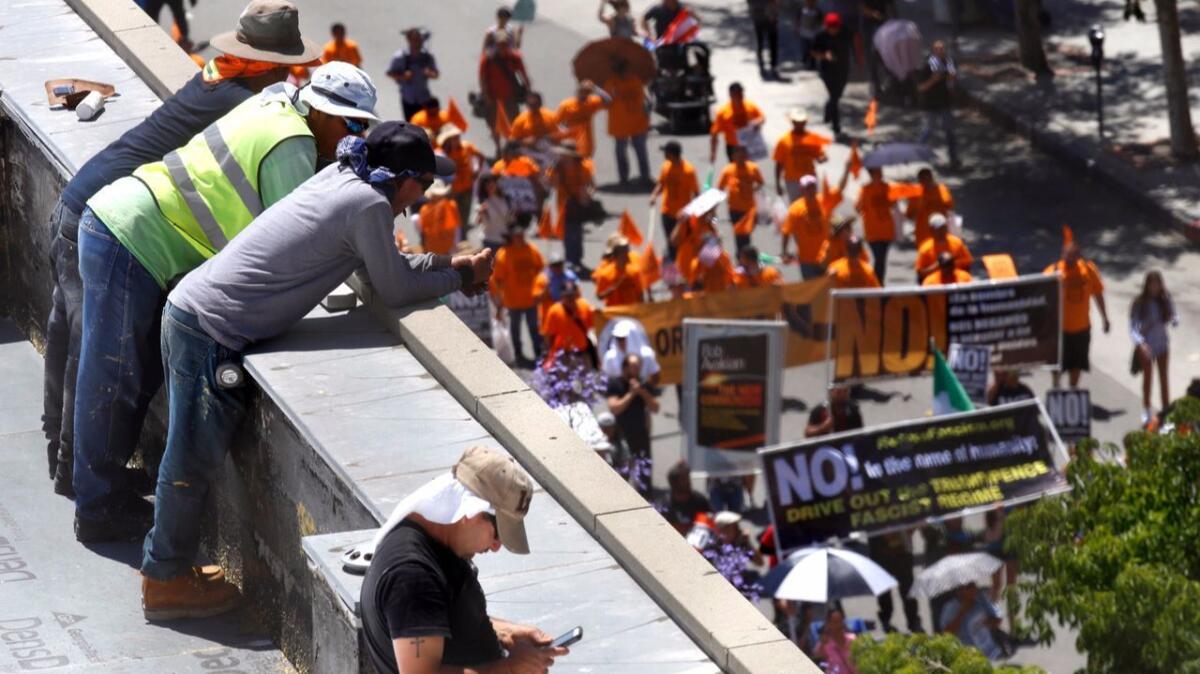
1:31 p.m.
LAPD command center
Back at the command center, officials were keeping an eye on the group that had rallied at MacArthur Park and was now heading toward downtown’s Grand Park.
Officials guessed about 15,000 people were marching in that demonstration. The command center received a report that someone in the crowd was throwing water bottles.
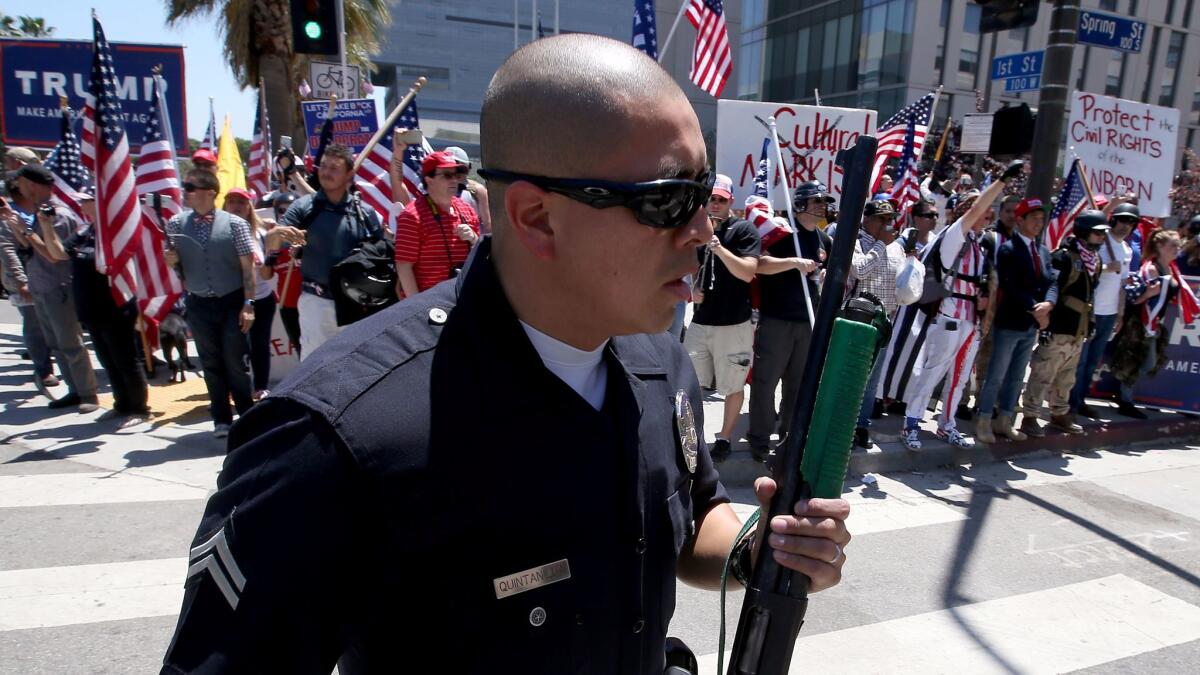
2:20 p.m.
1st and Spring streets
The LAPD’s focus turned to an intersection next to the department’s headquarters at 1st and Spring streets in downtown, where a few dozen Trump supporters squared off with scores of opponents. One side waved American flags — and one that said “Don’t tread on me.” The other group was dotted mostly with Mexican flags and anti-Trump signs.
The groups were separated by a line of yellow tape and helmet-wearing officers, their hands folded at their sides. Unsure of how the scene might play out, a handful of high-ranking LAPD officers stopped nearby to monitor what was going on.
Among them was Chief Charlie Beck, who chatted with his officers and at one point stood in the street, surveying the scene.
Beck said the LAPD’s concerns about the possibility of a massive, difficult-to-control demonstration hadn’t materialized.
The crowd — which estimates from authorities and organizers put at between 15,000 and 30,000 — was getting smaller, he said. There hadn’t been large walkouts at schools. Even the feuding pro- and anti-Trump groups were small enough that police could easily intervene if necessary, he said.
“So far so good,” the chief said, turning to watch another group of demonstrators march toward the intersection. “But it’s still early, so we will see.”
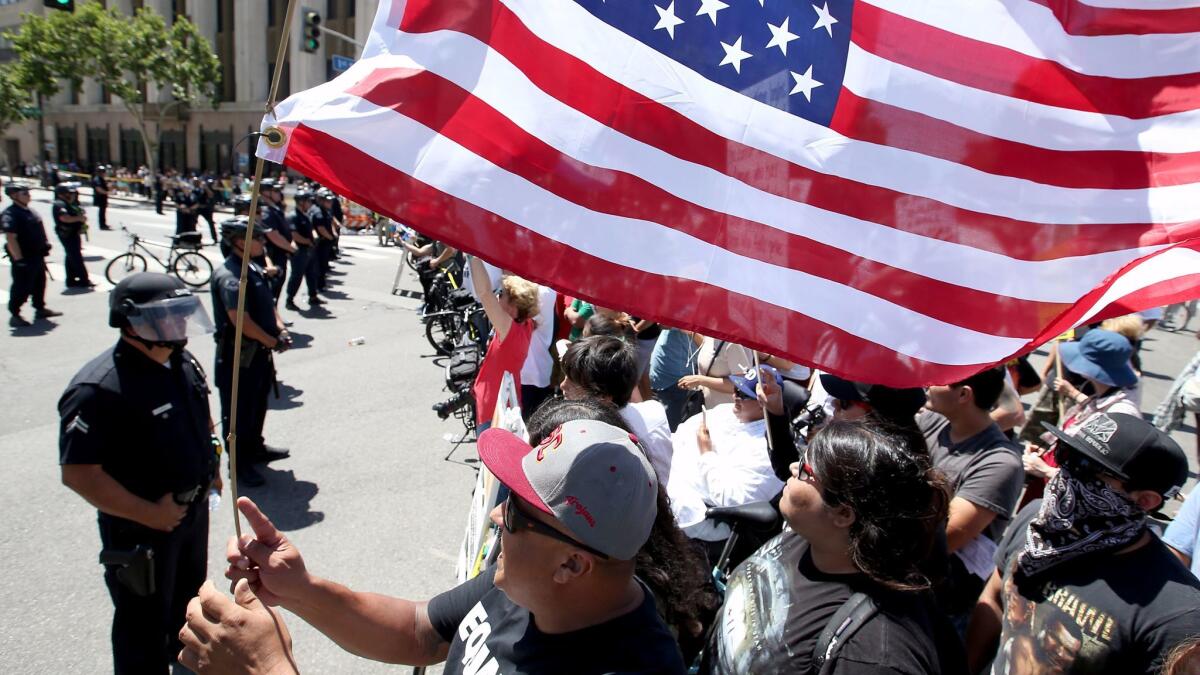
3:30 p.m.
Los Angeles and Temple streets
The people who rallied in Grand Park in front of City Hall — where the bulk of Monday’s demonstrators convened — were leaving. Meanwhile, the Trump supporters left their position outside LAPD headquarters and walked along 1st Street. A smaller group of people — several of them wearing all black with their faces covered by masks and scarves — shadowed them from across the street. Patrol cars crept down the middle, separating the two groups.
Both groups stopped at Los Angeles and Temple streets, each claiming their own corner of the intersection. Officers got out of their patrol cars, strapped on riot helmets and reached for less-lethal devices in case they were necessary.
The standoff continued for another half-hour, with the two groups at one point starting to resume marching. Again, as motorcycle officers zipped ahead to block intersections, other officers lingered behind in their black-and-white cars, keeping an eye on the groups.
Eventually, only a few dozen people opposing the pro-Trump group were left, standing next to the officers and their bicycles. The crowd slowly dispersed. As it dwindled, so did the number of officers.
By the day’s end, the LAPD said that officers had arrested one person during the demonstrations: a 24-year-old man who police say was booked on suspicion of assault with a deadly weapon.
“Angelenos got to exercise free speech in a productive way. Their voices were heard, with minimal involvement from the LAPD,” said Josh Rubenstein, a department spokesman, recapping the day. “We were pleased that it went this smoothly.”
For more news on the LAPD, follow me on Twitter: @katemather
Sign up for Essential California
The most important California stories and recommendations in your inbox every morning.
You may occasionally receive promotional content from the Los Angeles Times.



